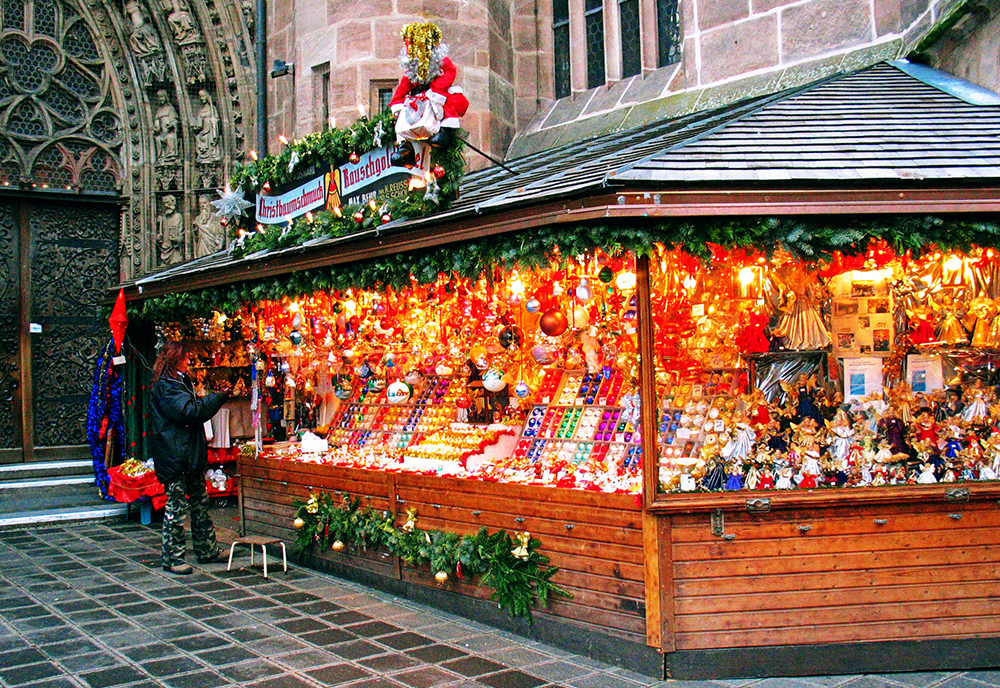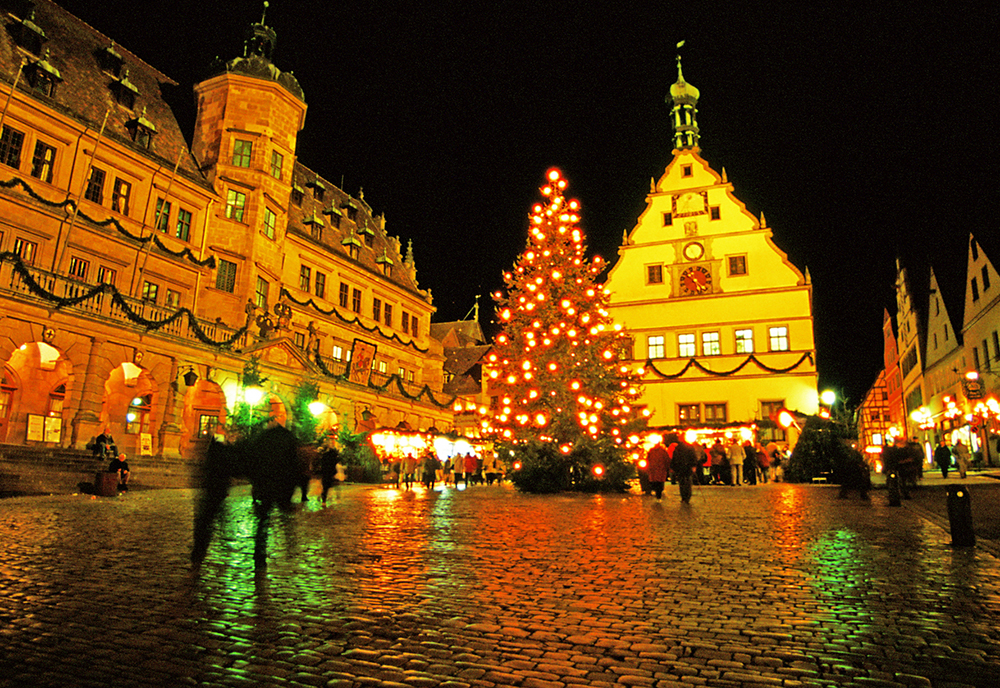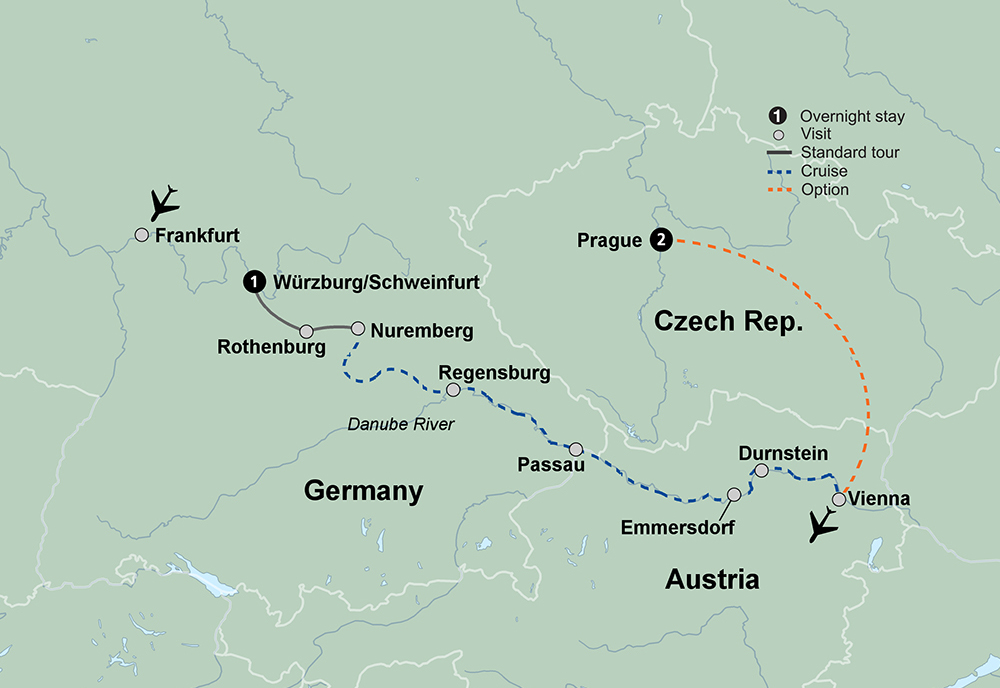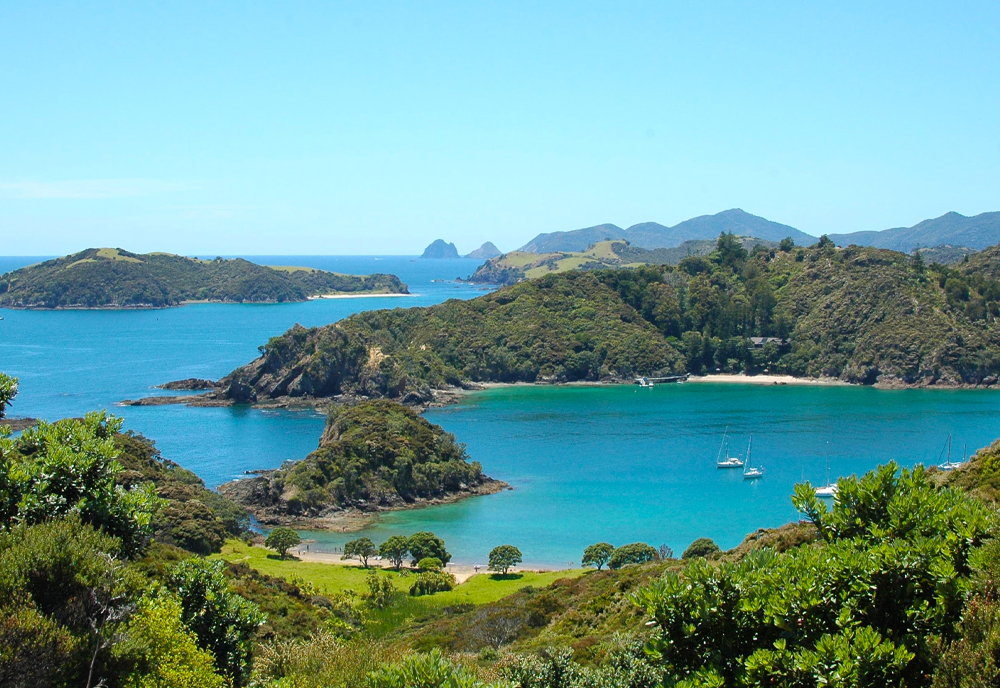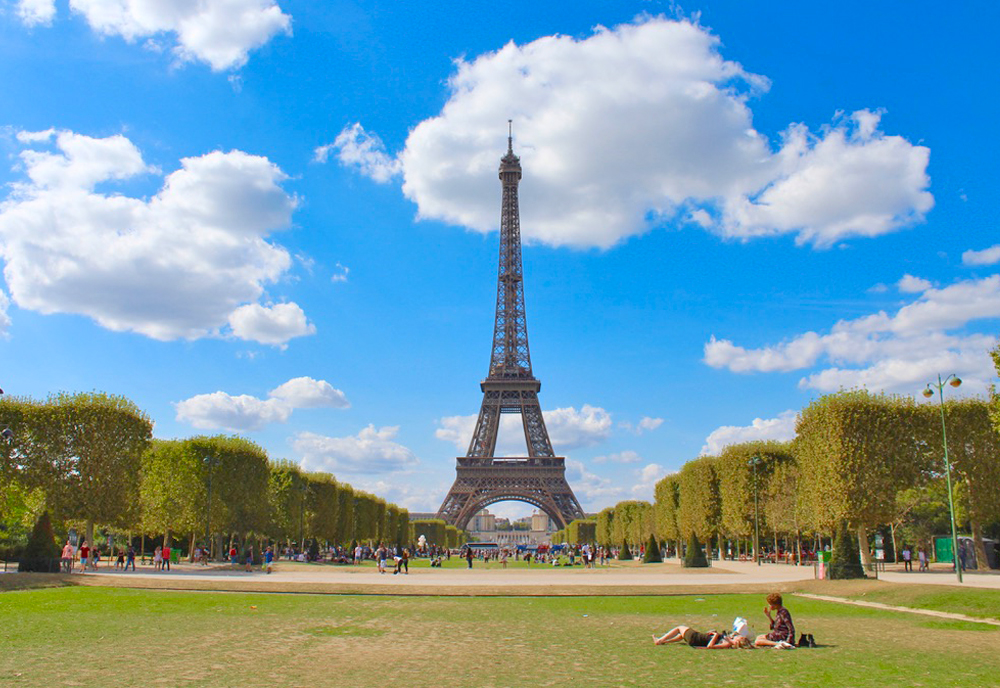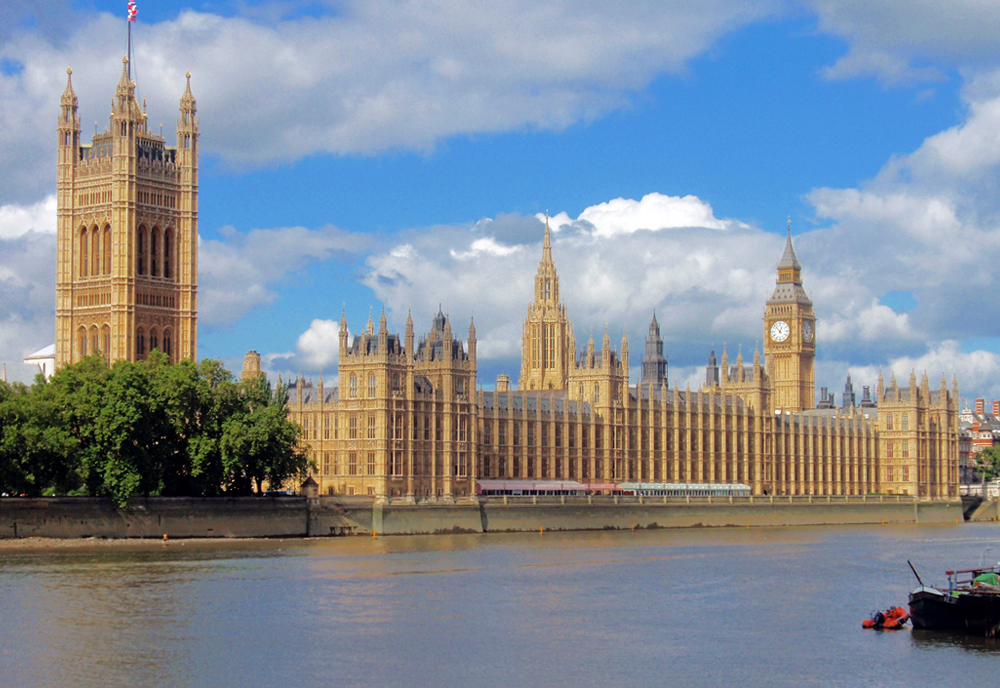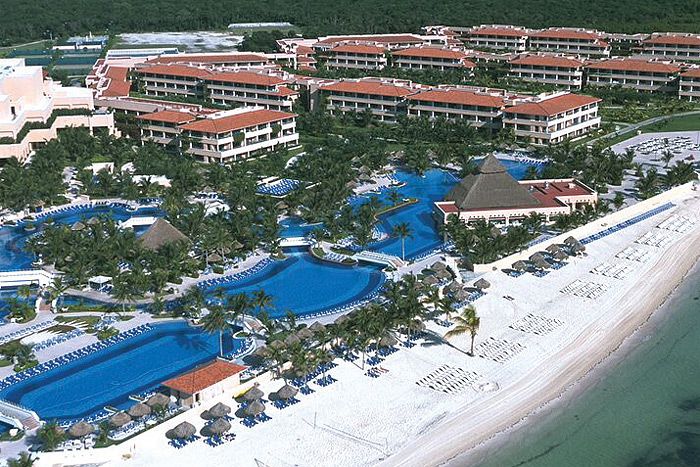Christmas on the Danube
Cruise, River cruise
Alternative
Christmas on the Danube
On a boat cruise along the Danube, explore charming Christmas markets and see Europe dressed in its holiday best. Discover Würzburg, an ancient Franconian wine town. Explore Nuremburg, home to one of the oldest and largest Christmas markets in the world. Float through the Wachau Valley, dotted with castles and hillside houses. Visit the 900-year-old Benedictine Melk Abbey, one of Europe’s largest Baroque monasteries. Enjoy a Glühwein Party – a German holiday gathering with mulled wine. Join a local expert and explore historic Vienna. Relax as you are transported to beloved riverside towns and delve into local holiday traditions.
On a boat cruise along the Danube, explore charming Christmas markets and see Europe dressed in its holiday best. Discover Würzburg, an ancient Franconian wine town. Explore Nuremburg, home to one of the oldest and largest Christmas markets in the world. Float through the Wachau Valley, dotted with castles and hillside houses. Visit the 900-year-old Benedictine Melk Abbey, one of Europe’s largest Baroque monasteries. Enjoy a Glühwein Party – a German holiday gathering with mulled wine. Join a local expert and explore historic Vienna. Relax as you are transported to beloved riverside towns and delve into local holiday traditions.
Interests
- Holiday Travel
8 Nights
Starting At
$3,299.00
USD
December 12, 2024 through December 20, 2024
Book by:
December 08, 2024 7:00 PM
Land Only Price
ID: 8461343
Itinerary Map
Itinerary Overview
Loading Itinerary Content...
Highlights
Christmas on the Danube
Wurzburg
This city of 125,000 is on the Main River, and traces of its history as a Bronze Age, Celtic and Frankish city can be found still. It was the site of one of the world’s largest witch trials in the 17th century with as many as 900 people executed. On one day in March 1945, 90% of the city was destroyed by British bombers and the firestorm which resulted. Now the city is an important administrative center and center of the local white wine industry.
Rothenburg
A town located in the Franconia region of Bavaria, Germany, Rothenburg is known as a well-preserved and picturesque medieval old town, a popular destination for tourists from around the world. It was a Free Imperial City from the late Middle Ages to 1803. Rothenburg is also part of the popular “Romantic Road” through southern Germany. Rothenburg, which translates to Red Fortress (or burgh, a medieval fortified settlement), refers to the red color of the roofs of the houses which overlook the river. The name may also refer to the process of retting (“rotten” in German) flax for linen production. In October of 1631, during the Thirty Year’s War, Johann Tserclaes wanted to quarter his troops in Rothenburg, but rather than allowing them entrance, the town defended its self, but was quickly defeated. After the winter, Tserclaes and his troops left the town poor and nearly empty. The townsfolk remaining in Rothenburg were stricken and killed by the Black Death in 1634. Without money and power, Rothenburg stopped growing, which is why the town was able to preserve its 17th century state. While buildings within the walled city reflect the city’s medieval history, some parts of the town are more modern in concession to the tourist trade.
Regensburg
This is a city at the confluence of the Danube and Regen Rivers in Bavaria, and its medieval center is a UNESCO World Heritage site. It dates from the Stone Age, and the Romans were here in the 1st century. Its 12th-century Stone Bridge over the Danube opened up important trade routes between medieval Europe and Venice, and helped it become an economic center. Other attractions are St. Peter’s Cathedral and the Old Town Hall.
6-Night Danube River Cruise
Carving its way through ten European countries, the Danube is the perfect waterway to take in the area’s best landscapes, charming vistas, and riverside castles. With a 6-night cruise, make your way through Germany and Austria.
Nuremberg
Nuremberg has a population of 500,000 within the city itself and as many as 3.5 million in the metro area, and may be best known as the site of the Nazi war trials after WWII. It is located in Bavaria on the Rhine-Main-Danube Canal and the Pegnitz River, and has always been a strategic site. Its most important attractions are the Imperial Castle, the city walls, artist Albrecht Durer’s House and in winter, the oldest Christmas Market in Germany. It is an industrial center, with companies such as Siemens and MAN, and is also known for traditional products such as gingerbread and pocket watches called “Nuremberg Eggs”.
Passau
Passau is in Lower Bavaria near the Austrian border, and is known as the “City of Three Rivers” because the Inn and Ilz Rivers join the Danube there. It dates from the Stone Age, and became an important religious center in the 8th century. Its major attractions include St. Stephan’s Cathedral, with the world’s largest organ, and the Bishop’s Castle. Passau was famous for manufacturing swords and other weapons during the Renaissance.
Choice on Tour: Passau City Walk or Hike Up to Maria Hilf Hilltop Church
Enjoy a leisurely paced guided walking tour of Passau, the 2,000 year old fairy tale city also known as the "City of the Three Rivers" and take in its ornate Baroque architecture, the cobblestone streets, and St. Stephen's Cathedral, home to Europe's largest church organ -OR- join a hike with a local guide up to Maria Hilf hilltop church and be rewarded with spectacular views over Passau.Passau City WalkActivity Level 3: This tour is locally guided. Tour duration is approximately 2 hours. Travelers need to be ready to walk on uneven cobblestone streets and to stand during the entire duration of the walking tour.Hike up to Maria Hilf Hilltop ChurchActivity Level 4: This tour is locally guided. tour duration is approximately 2 hours and includes climbing up and going down the hill with more than 100 steps. Travelers may expect uneven ground and good walking shoes are recommended.
Wachau Valley
This Danube valley is 25 miles long and runs from Melk to Krems in Lower Austria, and is a UNESCO site. The valley has been inhabited since prehistoric times, and is a famous wine region. There are no bridges across the Danube in the valley, so ferries are the only way to cross. The town of Durnstein in Wachau Valley was where King Richard Lionheart was held captive by Duke Leopold.
Gluhwein Party
Glüwhein is the traditional hot drink served during the winter period, especially around Christmas and Halloween in Europe and can be normally found at Christmas markets. Mulled wine is a beverage usually made with red wine, normally port and claret, along with various mulling spices, including cinnamon and raisins. Wine was first recorded as spiced and heated in Rome during the 2nd century. The Romans travelled across Europe, conquering much of it, bringing wine and viticulture with them up to the Rhine and Danube rivers. Guests will have a chance to taste this delectable beverage as part of an excursion in the Wachau Valley.
Vienna
This is the capital city of Austria, located on the Danube, with a population of over 2 million in the metro area. It is known as the “City of Music” because of the numerous famous composers who have lived and worked here, such as Mozart, Haydn, Beethoven and Brahms, and also as the “City of Dreams” as it was home to Sigmund Freud. Some of its primary sights are Schonbrunn Palace, Hofburg Palace, Opera House, Belvedere and St. Stephen’s Cathedral. Vienna is also known for its coffee houses and restaurants.
Hofburg Palace
This is the 13th-century former imperial palace in central Vienna. Part of it is now the official residence and office of the President of Austria, and it was the winter home of the emperors of the Austro-Hungarian Empire, the Hapsburgs. It has numerous wings and connected buildings, which include the Spanish Riding School, the Imperial Library, Albertina Museum, the Vienna Boys Choir, ballrooms, a monastery and several other museums and chapels. It represents several styles of architecture due to the many additions made up to the 19th century, from Gothic to Baroque to Art Nouveau.
Vienna Opera House
This is the home of the Vienna State Opera, and was built on the Ringstrasse in the mid 19th century. It was not very popular with the Viennese people and one of the principal architects committed suicide as a result. Emperor Franz Josef and Empress Elisabeth (Sissi) attended the opening performance of Mozart’s Don Giovanni here in 1869. The opera house was badly damaged by Allied bombing and fire in 1945, and it was restored and reopened in 1955 with a performance of Beethoven’s “Fidelio”. It is one of the busiest opera houses in the world with 50 to 60 different operas per year, and is also well known for its children’s productions.
Christmas Markets
The Christmas Markets in Europe typically open the last week of November and close on Christmas Eve. The tradition began in the Middle Ages in Central Europe, what is now Germany, eastern France and Austria, and now there are markets in many European countries. There is usually a Christmas tree, a nativity scene and many booths selling traditional regional toys and foods, and also beer and glühwein or vin chaud (hot mulled wine). Some famous markets are in Nuremberg, Cologne, Frankfurt, Strasbourg (France) and Rothenberg. As many as 3 million people will visit each one every year.
Wurzburg
This city of 125,000 is on the Main River, and traces of its history as a Bronze Age, Celtic and Frankish city can be found still. It was the site of one of the world’s largest witch trials in the 17th century with as many as 900 people executed. On one day in March 1945, 90% of the city was destroyed by British bombers and the firestorm which resulted. Now the city is an important administrative center and center of the local white wine industry.
Rothenburg
A town located in the Franconia region of Bavaria, Germany, Rothenburg is known as a well-preserved and picturesque medieval old town, a popular destination for tourists from around the world. It was a Free Imperial City from the late Middle Ages to 1803. Rothenburg is also part of the popular “Romantic Road” through southern Germany. Rothenburg, which translates to Red Fortress (or burgh, a medieval fortified settlement), refers to the red color of the roofs of the houses which overlook the river. The name may also refer to the process of retting (“rotten” in German) flax for linen production. In October of 1631, during the Thirty Year’s War, Johann Tserclaes wanted to quarter his troops in Rothenburg, but rather than allowing them entrance, the town defended its self, but was quickly defeated. After the winter, Tserclaes and his troops left the town poor and nearly empty. The townsfolk remaining in Rothenburg were stricken and killed by the Black Death in 1634. Without money and power, Rothenburg stopped growing, which is why the town was able to preserve its 17th century state. While buildings within the walled city reflect the city’s medieval history, some parts of the town are more modern in concession to the tourist trade.
Regensburg
This is a city at the confluence of the Danube and Regen Rivers in Bavaria, and its medieval center is a UNESCO World Heritage site. It dates from the Stone Age, and the Romans were here in the 1st century. Its 12th-century Stone Bridge over the Danube opened up important trade routes between medieval Europe and Venice, and helped it become an economic center. Other attractions are St. Peter’s Cathedral and the Old Town Hall.
6-Night Danube River Cruise
Carving its way through ten European countries, the Danube is the perfect waterway to take in the area’s best landscapes, charming vistas, and riverside castles. With a 6-night cruise, make your way through Germany and Austria.
Nuremberg
Nuremberg has a population of 500,000 within the city itself and as many as 3.5 million in the metro area, and may be best known as the site of the Nazi war trials after WWII. It is located in Bavaria on the Rhine-Main-Danube Canal and the Pegnitz River, and has always been a strategic site. Its most important attractions are the Imperial Castle, the city walls, artist Albrecht Durer’s House and in winter, the oldest Christmas Market in Germany. It is an industrial center, with companies such as Siemens and MAN, and is also known for traditional products such as gingerbread and pocket watches called “Nuremberg Eggs”.
Passau
Passau is in Lower Bavaria near the Austrian border, and is known as the “City of Three Rivers” because the Inn and Ilz Rivers join the Danube there. It dates from the Stone Age, and became an important religious center in the 8th century. Its major attractions include St. Stephan’s Cathedral, with the world’s largest organ, and the Bishop’s Castle. Passau was famous for manufacturing swords and other weapons during the Renaissance.
Choice on Tour: Passau City Walk or Hike Up to Maria Hilf Hilltop Church
Enjoy a leisurely paced guided walking tour of Passau, the 2,000 year old fairy tale city also known as the "City of the Three Rivers" and take in its ornate Baroque architecture, the cobblestone streets, and St. Stephen's Cathedral, home to Europe's largest church organ -OR- join a hike with a local guide up to Maria Hilf hilltop church and be rewarded with spectacular views over Passau.Passau City WalkActivity Level 3: This tour is locally guided. Tour duration is approximately 2 hours. Travelers need to be ready to walk on uneven cobblestone streets and to stand during the entire duration of the walking tour.Hike up to Maria Hilf Hilltop ChurchActivity Level 4: This tour is locally guided. tour duration is approximately 2 hours and includes climbing up and going down the hill with more than 100 steps. Travelers may expect uneven ground and good walking shoes are recommended.
Wachau Valley
This Danube valley is 25 miles long and runs from Melk to Krems in Lower Austria, and is a UNESCO site. The valley has been inhabited since prehistoric times, and is a famous wine region. There are no bridges across the Danube in the valley, so ferries are the only way to cross. The town of Durnstein in Wachau Valley was where King Richard Lionheart was held captive by Duke Leopold.
Gluhwein Party
Glüwhein is the traditional hot drink served during the winter period, especially around Christmas and Halloween in Europe and can be normally found at Christmas markets. Mulled wine is a beverage usually made with red wine, normally port and claret, along with various mulling spices, including cinnamon and raisins. Wine was first recorded as spiced and heated in Rome during the 2nd century. The Romans travelled across Europe, conquering much of it, bringing wine and viticulture with them up to the Rhine and Danube rivers. Guests will have a chance to taste this delectable beverage as part of an excursion in the Wachau Valley.
Vienna
This is the capital city of Austria, located on the Danube, with a population of over 2 million in the metro area. It is known as the “City of Music” because of the numerous famous composers who have lived and worked here, such as Mozart, Haydn, Beethoven and Brahms, and also as the “City of Dreams” as it was home to Sigmund Freud. Some of its primary sights are Schonbrunn Palace, Hofburg Palace, Opera House, Belvedere and St. Stephen’s Cathedral. Vienna is also known for its coffee houses and restaurants.
Hofburg Palace
This is the 13th-century former imperial palace in central Vienna. Part of it is now the official residence and office of the President of Austria, and it was the winter home of the emperors of the Austro-Hungarian Empire, the Hapsburgs. It has numerous wings and connected buildings, which include the Spanish Riding School, the Imperial Library, Albertina Museum, the Vienna Boys Choir, ballrooms, a monastery and several other museums and chapels. It represents several styles of architecture due to the many additions made up to the 19th century, from Gothic to Baroque to Art Nouveau.
Vienna Opera House
This is the home of the Vienna State Opera, and was built on the Ringstrasse in the mid 19th century. It was not very popular with the Viennese people and one of the principal architects committed suicide as a result. Emperor Franz Josef and Empress Elisabeth (Sissi) attended the opening performance of Mozart’s Don Giovanni here in 1869. The opera house was badly damaged by Allied bombing and fire in 1945, and it was restored and reopened in 1955 with a performance of Beethoven’s “Fidelio”. It is one of the busiest opera houses in the world with 50 to 60 different operas per year, and is also well known for its children’s productions.
Christmas Markets
The Christmas Markets in Europe typically open the last week of November and close on Christmas Eve. The tradition began in the Middle Ages in Central Europe, what is now Germany, eastern France and Austria, and now there are markets in many European countries. There is usually a Christmas tree, a nativity scene and many booths selling traditional regional toys and foods, and also beer and glühwein or vin chaud (hot mulled wine). Some famous markets are in Nuremberg, Cologne, Frankfurt, Strasbourg (France) and Rothenberg. As many as 3 million people will visit each one every year.
Hotels
Christmas on the Danube
Hotel Melchior Park
Am Galgengerg 49, Wurzburg, Germany
MS Swiss Crown
Bachweid 20, Nuremberg, Switzerland
Hotel Melchior Park
Am Galgengerg 49, Wurzburg, Germany
MS Swiss Crown
Bachweid 20, Nuremberg, Switzerland
Highlights
Christmas on the Danube
Wurzburg
This city of 125,000 is on the Main River, and traces of its history as a Bronze Age, Celtic and Frankish city can be found still. It was the site of one of the world’s largest witch trials in the 17th century with as many as 900 people executed. On one day in March 1945, 90% of the city was destroyed by British bombers and the firestorm which resulted. Now the city is an important administrative center and center of the local white wine industry.
Rothenburg
A town located in the Franconia region of Bavaria, Germany, Rothenburg is known as a well-preserved and picturesque medieval old town, a popular destination for tourists from around the world. It was a Free Imperial City from the late Middle Ages to 1803. Rothenburg is also part of the popular “Romantic Road” through southern Germany. Rothenburg, which translates to Red Fortress (or burgh, a medieval fortified settlement), refers to the red color of the roofs of the houses which overlook the river. The name may also refer to the process of retting (“rotten” in German) flax for linen production. In October of 1631, during the Thirty Year’s War, Johann Tserclaes wanted to quarter his troops in Rothenburg, but rather than allowing them entrance, the town defended its self, but was quickly defeated. After the winter, Tserclaes and his troops left the town poor and nearly empty. The townsfolk remaining in Rothenburg were stricken and killed by the Black Death in 1634. Without money and power, Rothenburg stopped growing, which is why the town was able to preserve its 17th century state. While buildings within the walled city reflect the city’s medieval history, some parts of the town are more modern in concession to the tourist trade.
Regensburg
This is a city at the confluence of the Danube and Regen Rivers in Bavaria, and its medieval center is a UNESCO World Heritage site. It dates from the Stone Age, and the Romans were here in the 1st century. Its 12th-century Stone Bridge over the Danube opened up important trade routes between medieval Europe and Venice, and helped it become an economic center. Other attractions are St. Peter’s Cathedral and the Old Town Hall.
6-Night Danube River Cruise
Carving its way through ten European countries, the Danube is the perfect waterway to take in the area’s best landscapes, charming vistas, and riverside castles. With a 6-night cruise, make your way through Germany and Austria.
Nuremberg
Nuremberg has a population of 500,000 within the city itself and as many as 3.5 million in the metro area, and may be best known as the site of the Nazi war trials after WWII. It is located in Bavaria on the Rhine-Main-Danube Canal and the Pegnitz River, and has always been a strategic site. Its most important attractions are the Imperial Castle, the city walls, artist Albrecht Durer’s House and in winter, the oldest Christmas Market in Germany. It is an industrial center, with companies such as Siemens and MAN, and is also known for traditional products such as gingerbread and pocket watches called “Nuremberg Eggs”.
Passau
Passau is in Lower Bavaria near the Austrian border, and is known as the “City of Three Rivers” because the Inn and Ilz Rivers join the Danube there. It dates from the Stone Age, and became an important religious center in the 8th century. Its major attractions include St. Stephan’s Cathedral, with the world’s largest organ, and the Bishop’s Castle. Passau was famous for manufacturing swords and other weapons during the Renaissance.
Choice on Tour: Passau City Walk or Hike Up to Maria Hilf Hilltop Church
Enjoy a leisurely paced guided walking tour of Passau, the 2,000 year old fairy tale city also known as the "City of the Three Rivers" and take in its ornate Baroque architecture, the cobblestone streets, and St. Stephen's Cathedral, home to Europe's largest church organ -OR- join a hike with a local guide up to Maria Hilf hilltop church and be rewarded with spectacular views over Passau.Passau City WalkActivity Level 3: This tour is locally guided. Tour duration is approximately 2 hours. Travelers need to be ready to walk on uneven cobblestone streets and to stand during the entire duration of the walking tour.Hike up to Maria Hilf Hilltop ChurchActivity Level 4: This tour is locally guided. tour duration is approximately 2 hours and includes climbing up and going down the hill with more than 100 steps. Travelers may expect uneven ground and good walking shoes are recommended.
Wachau Valley
This Danube valley is 25 miles long and runs from Melk to Krems in Lower Austria, and is a UNESCO site. The valley has been inhabited since prehistoric times, and is a famous wine region. There are no bridges across the Danube in the valley, so ferries are the only way to cross. The town of Durnstein in Wachau Valley was where King Richard Lionheart was held captive by Duke Leopold.
Gluhwein Party
Glüwhein is the traditional hot drink served during the winter period, especially around Christmas and Halloween in Europe and can be normally found at Christmas markets. Mulled wine is a beverage usually made with red wine, normally port and claret, along with various mulling spices, including cinnamon and raisins. Wine was first recorded as spiced and heated in Rome during the 2nd century. The Romans travelled across Europe, conquering much of it, bringing wine and viticulture with them up to the Rhine and Danube rivers. Guests will have a chance to taste this delectable beverage as part of an excursion in the Wachau Valley.
Vienna
This is the capital city of Austria, located on the Danube, with a population of over 2 million in the metro area. It is known as the “City of Music” because of the numerous famous composers who have lived and worked here, such as Mozart, Haydn, Beethoven and Brahms, and also as the “City of Dreams” as it was home to Sigmund Freud. Some of its primary sights are Schonbrunn Palace, Hofburg Palace, Opera House, Belvedere and St. Stephen’s Cathedral. Vienna is also known for its coffee houses and restaurants.
Hofburg Palace
This is the 13th-century former imperial palace in central Vienna. Part of it is now the official residence and office of the President of Austria, and it was the winter home of the emperors of the Austro-Hungarian Empire, the Hapsburgs. It has numerous wings and connected buildings, which include the Spanish Riding School, the Imperial Library, Albertina Museum, the Vienna Boys Choir, ballrooms, a monastery and several other museums and chapels. It represents several styles of architecture due to the many additions made up to the 19th century, from Gothic to Baroque to Art Nouveau.
Vienna Opera House
This is the home of the Vienna State Opera, and was built on the Ringstrasse in the mid 19th century. It was not very popular with the Viennese people and one of the principal architects committed suicide as a result. Emperor Franz Josef and Empress Elisabeth (Sissi) attended the opening performance of Mozart’s Don Giovanni here in 1869. The opera house was badly damaged by Allied bombing and fire in 1945, and it was restored and reopened in 1955 with a performance of Beethoven’s “Fidelio”. It is one of the busiest opera houses in the world with 50 to 60 different operas per year, and is also well known for its children’s productions.
Christmas Markets
The Christmas Markets in Europe typically open the last week of November and close on Christmas Eve. The tradition began in the Middle Ages in Central Europe, what is now Germany, eastern France and Austria, and now there are markets in many European countries. There is usually a Christmas tree, a nativity scene and many booths selling traditional regional toys and foods, and also beer and glühwein or vin chaud (hot mulled wine). Some famous markets are in Nuremberg, Cologne, Frankfurt, Strasbourg (France) and Rothenberg. As many as 3 million people will visit each one every year.
Wurzburg
This city of 125,000 is on the Main River, and traces of its history as a Bronze Age, Celtic and Frankish city can be found still. It was the site of one of the world’s largest witch trials in the 17th century with as many as 900 people executed. On one day in March 1945, 90% of the city was destroyed by British bombers and the firestorm which resulted. Now the city is an important administrative center and center of the local white wine industry.
Rothenburg
A town located in the Franconia region of Bavaria, Germany, Rothenburg is known as a well-preserved and picturesque medieval old town, a popular destination for tourists from around the world. It was a Free Imperial City from the late Middle Ages to 1803. Rothenburg is also part of the popular “Romantic Road” through southern Germany. Rothenburg, which translates to Red Fortress (or burgh, a medieval fortified settlement), refers to the red color of the roofs of the houses which overlook the river. The name may also refer to the process of retting (“rotten” in German) flax for linen production. In October of 1631, during the Thirty Year’s War, Johann Tserclaes wanted to quarter his troops in Rothenburg, but rather than allowing them entrance, the town defended its self, but was quickly defeated. After the winter, Tserclaes and his troops left the town poor and nearly empty. The townsfolk remaining in Rothenburg were stricken and killed by the Black Death in 1634. Without money and power, Rothenburg stopped growing, which is why the town was able to preserve its 17th century state. While buildings within the walled city reflect the city’s medieval history, some parts of the town are more modern in concession to the tourist trade.
Regensburg
This is a city at the confluence of the Danube and Regen Rivers in Bavaria, and its medieval center is a UNESCO World Heritage site. It dates from the Stone Age, and the Romans were here in the 1st century. Its 12th-century Stone Bridge over the Danube opened up important trade routes between medieval Europe and Venice, and helped it become an economic center. Other attractions are St. Peter’s Cathedral and the Old Town Hall.
6-Night Danube River Cruise
Carving its way through ten European countries, the Danube is the perfect waterway to take in the area’s best landscapes, charming vistas, and riverside castles. With a 6-night cruise, make your way through Germany and Austria.
Nuremberg
Nuremberg has a population of 500,000 within the city itself and as many as 3.5 million in the metro area, and may be best known as the site of the Nazi war trials after WWII. It is located in Bavaria on the Rhine-Main-Danube Canal and the Pegnitz River, and has always been a strategic site. Its most important attractions are the Imperial Castle, the city walls, artist Albrecht Durer’s House and in winter, the oldest Christmas Market in Germany. It is an industrial center, with companies such as Siemens and MAN, and is also known for traditional products such as gingerbread and pocket watches called “Nuremberg Eggs”.
Passau
Passau is in Lower Bavaria near the Austrian border, and is known as the “City of Three Rivers” because the Inn and Ilz Rivers join the Danube there. It dates from the Stone Age, and became an important religious center in the 8th century. Its major attractions include St. Stephan’s Cathedral, with the world’s largest organ, and the Bishop’s Castle. Passau was famous for manufacturing swords and other weapons during the Renaissance.
Choice on Tour: Passau City Walk or Hike Up to Maria Hilf Hilltop Church
Enjoy a leisurely paced guided walking tour of Passau, the 2,000 year old fairy tale city also known as the "City of the Three Rivers" and take in its ornate Baroque architecture, the cobblestone streets, and St. Stephen's Cathedral, home to Europe's largest church organ -OR- join a hike with a local guide up to Maria Hilf hilltop church and be rewarded with spectacular views over Passau.Passau City WalkActivity Level 3: This tour is locally guided. Tour duration is approximately 2 hours. Travelers need to be ready to walk on uneven cobblestone streets and to stand during the entire duration of the walking tour.Hike up to Maria Hilf Hilltop ChurchActivity Level 4: This tour is locally guided. tour duration is approximately 2 hours and includes climbing up and going down the hill with more than 100 steps. Travelers may expect uneven ground and good walking shoes are recommended.
Wachau Valley
This Danube valley is 25 miles long and runs from Melk to Krems in Lower Austria, and is a UNESCO site. The valley has been inhabited since prehistoric times, and is a famous wine region. There are no bridges across the Danube in the valley, so ferries are the only way to cross. The town of Durnstein in Wachau Valley was where King Richard Lionheart was held captive by Duke Leopold.
Gluhwein Party
Glüwhein is the traditional hot drink served during the winter period, especially around Christmas and Halloween in Europe and can be normally found at Christmas markets. Mulled wine is a beverage usually made with red wine, normally port and claret, along with various mulling spices, including cinnamon and raisins. Wine was first recorded as spiced and heated in Rome during the 2nd century. The Romans travelled across Europe, conquering much of it, bringing wine and viticulture with them up to the Rhine and Danube rivers. Guests will have a chance to taste this delectable beverage as part of an excursion in the Wachau Valley.
Vienna
This is the capital city of Austria, located on the Danube, with a population of over 2 million in the metro area. It is known as the “City of Music” because of the numerous famous composers who have lived and worked here, such as Mozart, Haydn, Beethoven and Brahms, and also as the “City of Dreams” as it was home to Sigmund Freud. Some of its primary sights are Schonbrunn Palace, Hofburg Palace, Opera House, Belvedere and St. Stephen’s Cathedral. Vienna is also known for its coffee houses and restaurants.
Hofburg Palace
This is the 13th-century former imperial palace in central Vienna. Part of it is now the official residence and office of the President of Austria, and it was the winter home of the emperors of the Austro-Hungarian Empire, the Hapsburgs. It has numerous wings and connected buildings, which include the Spanish Riding School, the Imperial Library, Albertina Museum, the Vienna Boys Choir, ballrooms, a monastery and several other museums and chapels. It represents several styles of architecture due to the many additions made up to the 19th century, from Gothic to Baroque to Art Nouveau.
Vienna Opera House
This is the home of the Vienna State Opera, and was built on the Ringstrasse in the mid 19th century. It was not very popular with the Viennese people and one of the principal architects committed suicide as a result. Emperor Franz Josef and Empress Elisabeth (Sissi) attended the opening performance of Mozart’s Don Giovanni here in 1869. The opera house was badly damaged by Allied bombing and fire in 1945, and it was restored and reopened in 1955 with a performance of Beethoven’s “Fidelio”. It is one of the busiest opera houses in the world with 50 to 60 different operas per year, and is also well known for its children’s productions.
Christmas Markets
The Christmas Markets in Europe typically open the last week of November and close on Christmas Eve. The tradition began in the Middle Ages in Central Europe, what is now Germany, eastern France and Austria, and now there are markets in many European countries. There is usually a Christmas tree, a nativity scene and many booths selling traditional regional toys and foods, and also beer and glühwein or vin chaud (hot mulled wine). Some famous markets are in Nuremberg, Cologne, Frankfurt, Strasbourg (France) and Rothenberg. As many as 3 million people will visit each one every year.
Hotels
Christmas on the Danube
Hotel Melchior Park
Am Galgengerg 49, Wurzburg, Germany
MS Swiss Crown
Bachweid 20, Nuremberg, Switzerland
Hotel Melchior Park
Am Galgengerg 49, Wurzburg, Germany
MS Swiss Crown
Bachweid 20, Nuremberg, Switzerland
About Collette

More trips from Collette
Cancel for Any Reason - Travel Protection Plan
The Traveling Well Experience - On-Tour Wellness & Quality Measures
With Collette, the World is Within Your Reach
True adventures go beyond incredible destinations or inclusive packages. Collette delivers a sense of possibility across all seven continents.
Since 1918, we have been sharing our love of travel. Today our worldwide travel collection features comprehensive land tours, river cruises, rail journeys, small group tours, family trips, garden holidays and more. With Collette, wake each morning on tour with a new experience in front of you, and when your head hits the pillow, you will know it has been an amazing day. Best of all - we seamlessly handle the details. All you have to do is enjoy the adventure.
True adventures go beyond incredible destinations or inclusive packages. Collette delivers a sense of possibility across all seven continents.
Since 1918, we have been sharing our love of travel. Today our worldwide travel collection features comprehensive land tours, river cruises, rail journeys, small group tours, family trips, garden holidays and more. With Collette, wake each morning on tour with a new experience in front of you, and when your head hits the pillow, you will know it has been an amazing day. Best of all - we seamlessly handle the details. All you have to do is enjoy the adventure.
About Collette

With Collette, the World is Within Your Reach
True adventures go beyond incredible destinations or inclusive packages. Collette delivers a sense of possibility across all seven continents.
Since 1918, we have been sharing our love of travel. Today our worldwide travel collection features comprehensive land tours, river cruises, rail journeys, small group tours, family trips, garden holidays and more. With Collette, wake each morning on tour with a new experience in front of you, and when your head hits the pillow, you will know it has been an amazing day. Best of all - we seamlessly handle the details. All you have to do is enjoy the adventure.
True adventures go beyond incredible destinations or inclusive packages. Collette delivers a sense of possibility across all seven continents.
Since 1918, we have been sharing our love of travel. Today our worldwide travel collection features comprehensive land tours, river cruises, rail journeys, small group tours, family trips, garden holidays and more. With Collette, wake each morning on tour with a new experience in front of you, and when your head hits the pillow, you will know it has been an amazing day. Best of all - we seamlessly handle the details. All you have to do is enjoy the adventure.

